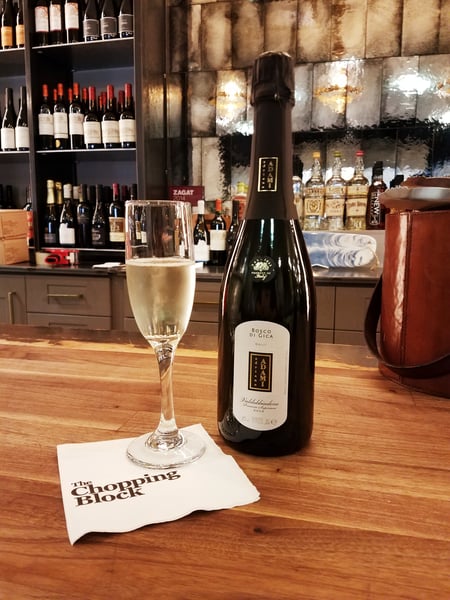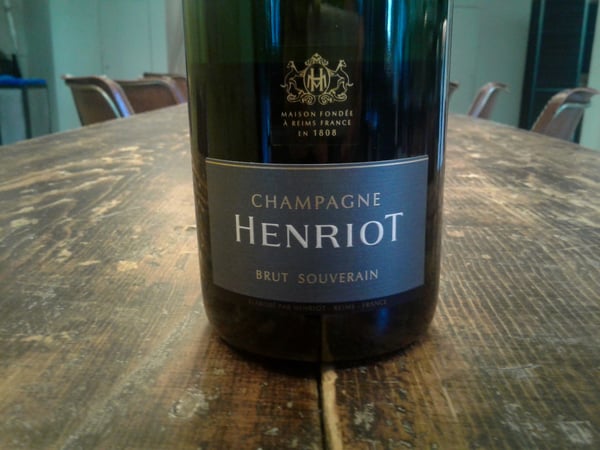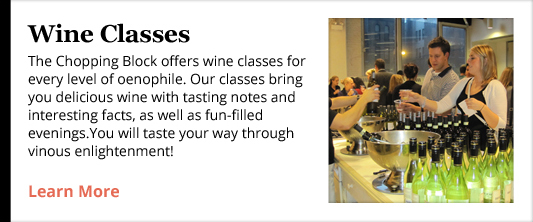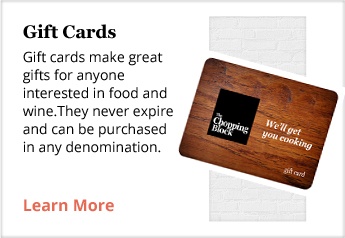Once upon a time, you’d pour a bubbly – from France, Spain or parts beyond - and folks would exclaim, “Oh goodie, Champagne!”
Now, when any anonymous bubbly flows, folks respond, “Oh goodie, Prosecco!”
Sure, both Champagne and Prosecco are sparkling wines, but they’re not the same. So, what’s the difference?
The easy answer: 30-bucks.
Prosecco hovers under $20 per bottle. Champagne costs $50 and up. Way up.
How to Bluff Your Way through Bubbly
The better answer lies in the foundations of all wine: the wine’s grape, soil, climate and culture.
Prosecco’s grape is Glera, grown almost exclusively in Italy’s Prosecco region, which – given the grape’s simplicity – is a good thing.
Champagne’s grapes are Chardonnay, Pinot Noir and Pinot Meunier. While Meunier mostly fills out the blend, Chardonnay and Pinot Noir reign supreme in world-wide vineyards, producing elegant wine, sometimes the most valuable flavors on earth. (A Pinot Noir from France’s Burgundy region recently sold for $7,000; that’s $275 per ounce!)
Prosecco’s soil is mapped by Italian wine law. The DOCG law (G for “garantita”) guarantees the finest zones to be Conegliano and Valdobbiadene, with steep, south-facing hills of clay, chalk and limestone soils, imparting delicate mineral flavors. DOC wines are allowed vineyards throughout hills and plains. IGT wines grow in flatlands best suited to grain; since 2009, these should be labelled Glera, not Prosecco.
According to French wine law, Champagne is Champagne, with one quality standard. Chalk and limestone endow Champagne with rich mineral complexity.
Prosecco is sunny and warm. Hilly DOCG vineyards receive richest sunshine, ripening grape sugars and fruity flavor, along with cool nights that maintain grape acidity.
Champagne is frigid. Once the earth’s coldest region to ripen grapes - if only every other year or so - winegrowers rely on their chalky-white soil to reflect heat back onto grapes. This cold keeps sugar in check, but promotes acid, translating into wines of steely acidity.
Both wines sport natural effervescence, both by adding yeast to new wine, stimulating a second fermentation and its by-product - carbon dioxide. The trick is trapping the CO2 in the wine.
Prosecco employs the Martinotti Method, and it all takes place in a tank: easy to control, easy to remove spent yeast cells (“lees”) and safe. After bottling, wines rest 90 days before sale.
Champagne employs the Champagne Method, which takes place in each bottle. If the bottle doesn’t explode – once making Champagne production a risky business – it’s difficult to control temperature. During a mandatory 12-month maturation with lees, yeast decomposes, creating flavors described as ‘baked brioche’; pressure squeezes large bubbles into teensy bubbles. Finally, there’s the magic of removing lees from the sealed bottle. For this presto-chango, check on-line for “degorgement”.
Putting it together, Prosecco is a fabulous fizz, with sun-ripe fruit, delicate sweetness, more-or-less refreshing acidity and eminently appealing – if not complex – flavor.
Prosecco’s scrubbing bubbles refresh the palate from the delicious fat of fried foods (such as fried calamari) and its delicate sweetness is a match for delicately sweet dishes (like sushi).
Champagne is statuesque, generally dry with firm acidity and complex flavor, a thrilling complement to gooey, flavorful - but not sweet - dishes including smoked meats and seafood, eggs and creamy pasta.
Enjoy these sparklers at The Chopping Block
For guests and shoppers at The Chopping Block, we recommend:
Adami, “Bosco di Gica” Prosecco Superiore DOCG: This Italian sparkler is a world-favorite for delicate, dry-ish and refreshing flavors, perfect to pair with international antipasti and light dishes. Guaranteed to add festivity to any occasion. $10 by the glass; $19.50 per bottle

Henriot, Brut “Souverain” Champagne: Elegant, harmonious and well-balanced, with fine bubbles, fresh apple flavors and toasted brioche accents. Enjoy this classic aperitif during a Chopping Block class or purchase a bottle to enjoy at home! $74.00 per bottle

Join us for a Wine Class
To have fun while learning about wine, watch for these upcoming wine classes at The Chopping Block:
HOW TO BLUFF YOUR WAY THROUGH WINE
Why is one wine lemony and refreshing, while another is meaty? Why does one wine cost $10 and another $100? The answers lie in four simple variables that determine all wine flavors. Learn these variables to understand how all wine is the same and each wine – sometimes each bottle! – unique. We’ll taste six wines, explore wine history, wine chemistry, food pairing and practice professional tasting technique. This class is a must for entry-level wine drinkers and a fun refresher for aficionados.
Sign up for Monday, September 24 6pm at the Mart.
THE VINEYARDS OF FRANCE
For centuries, the vineyards of France triumphed over plague, piracy and ground war to produce the world's most desired wines. Today - despite sagging sales - the wines, wine law and wine growing philosophy of France remain standards to which all other countries compare. Join us to taste five prominent styles and explore French wine growing culture, still the basis for fine wines around the world.
Sign up for Thursday, September 6 7pm Lincoln Square.
THE NOBLE GRAPES
Of the 6,000 wine grapes, 4 are dubbed "noble" for their superior performance in vineyard and winery, for their wine's popular appeal and sometimes for their price, making them the most valuable flavors on earth! We'll taste wines from these 4 grapes, 2 selections with 2 interpretations each (5 different wines in all-including one from our reserve list), to learn how these noble grapes express soil, climate & human culture.
Sign up for Tuesday, September 18 7pm Lincoln Square.
We hope to share a glass of wine with you at The Chopping Block soon!












